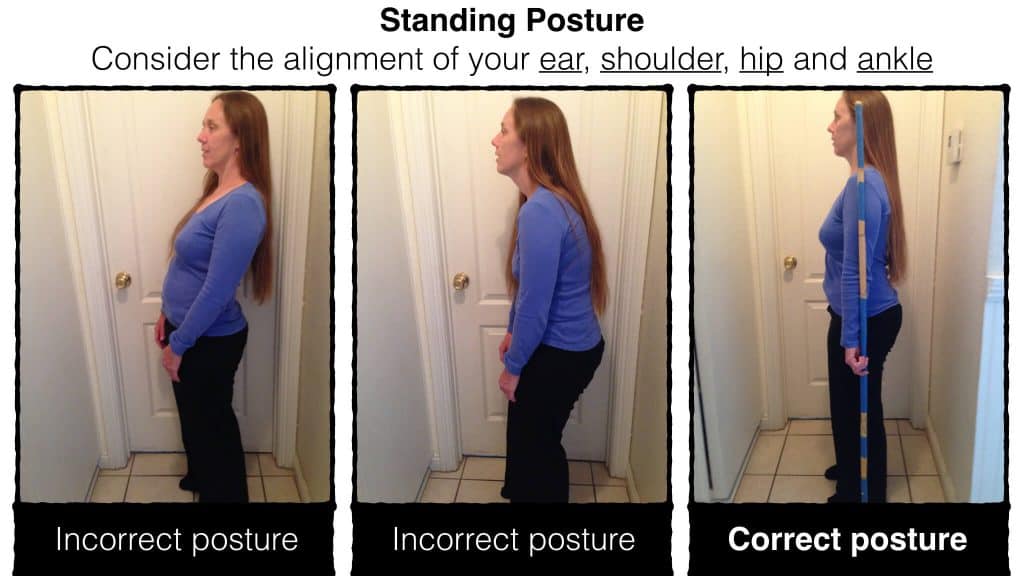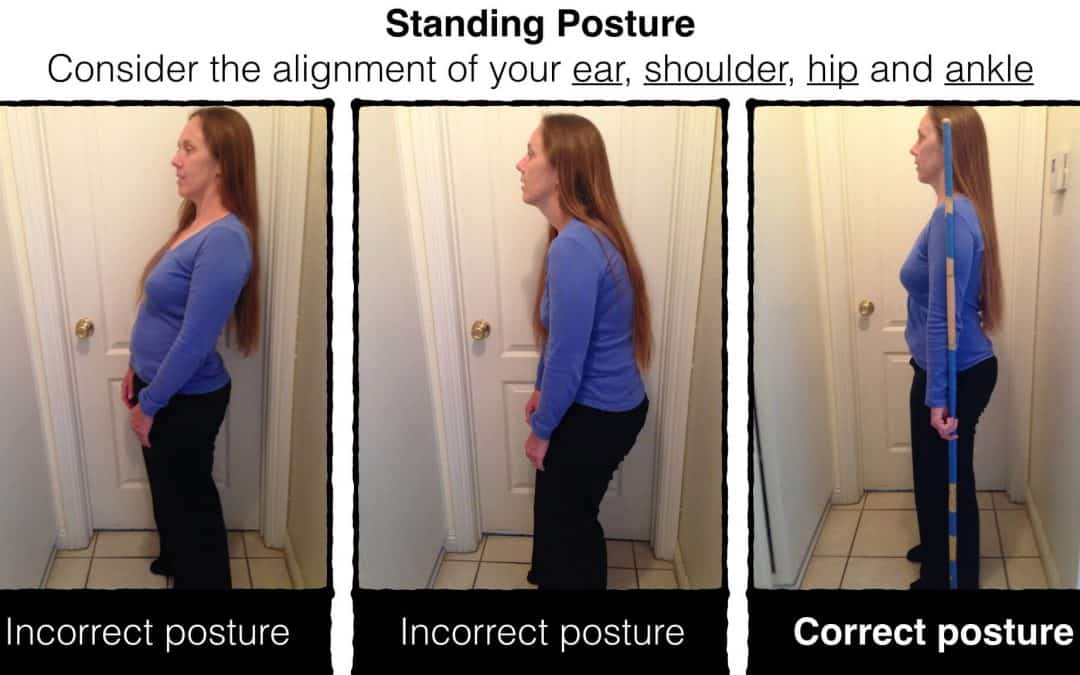Posture refers to the position of the body in space. How we hold ourselves matters for several reasons. It not only conveys our demeanor, it also affects our joints, muscles, and ligaments, particularly over time. Wolff’s Law states that bone and soft tissues adapt to forces applied to them. For example, we have all seen a person with a very forward head having a big hump along the back of the neck. We have referred to it as a Dowager’s hump. This is often times very preventable. With an erect posture the weight of the head (~10lbs) is maintained directly above the center of gravity maintaining muscular and skeletal balance. In a forward head posture, if the head is ~3 inches in front of the center of gravity, the head becomes an estimated 30lbs of weight upon the neck. That is a big difference! The effects are brutal over time. Our bones and soft tissues will adapt and harden creating that bump along the back of the neck in order to absorb the increased weight of the head. This bony and muscular adaptation not only happens at the neck. It can happen in other areas of our bodies as we habitually hold ourselves outside of the state of muscle and bone balance.
So how do we avoid poor posture which creates such havoc on our bodies? You want to stack the blocks–you want the center of gravity to come down on your body so that primarily bone accepts the force. Otherwise your muscles, joints, and ligaments take on more strain than originally intended. According to the American Physical Therapy Association, many individuals with chronic neck and back pain can trace their problems to years of faulty postural habits.
If string or plumb line were to hang from the ceiling alongside your body, the string should line up with your ear, shoulder, and hip joint if you are sitting. The string should line up with your ear, shoulder, hip, and ankle bone if you are standing.
 If string or plumb line were to hang from the ceiling alongside your body, the string should line up with your ear, shoulder, and hip joint if you are sitting.
If string or plumb line were to hang from the ceiling alongside your body, the string should line up with your ear, shoulder, and hip joint if you are sitting. If string or plumb line were to hang from the ceiling alongside your body, the string should line up with your ear, shoulder, hip, and ankle bone if you are standing.
If string or plumb line were to hang from the ceiling alongside your body, the string should line up with your ear, shoulder, hip, and ankle bone if you are standing.
There is an increase in injury with postural fatigue especially with holding loads for long periods of time. People abuse muscles and perpetuate trigger points by maintaining poor posture. Many of us have experienced the pain in our backs with sitting poorly. We may be sitting at the computer for hours searching Google. All of a sudden, there is a tapping sensation or jolt of pain in the mid back. These muscles are fatigued! This is your body telling you to sit up straight or move! If you do not listen to your body, the pain will increase and trigger points can develop. So what muscles should we target to help strengthen our ability to maintain a good posture? The postural muscles that will help facilitate a good, neutral spine position include your mid-back muscles, your lower abdominal muscles, and your buttock.
Good posture should be pain-free; poor posture may also be pain-free but is much more likely to cause pain, especially over time. Again, tissue being held outside of its normal, balanced state will eventually respond negatively in the way of pain. Now, if you have been having poor posture for quite some time and you are ready to make a change towards good posture, you may experience some discomfort as you work those bones and muscles back into a state of balance. The overall long term benefits of making this change toward good posture will far outweigh the temporary discomfort. Listen to what your mom has always said, “Sit up straight!” It will pay off for you.


 Doctor of Physical Therapy
Orthopedic Clinical Specialist
Doctor of Physical Therapy
Orthopedic Clinical Specialist